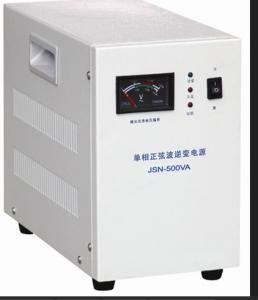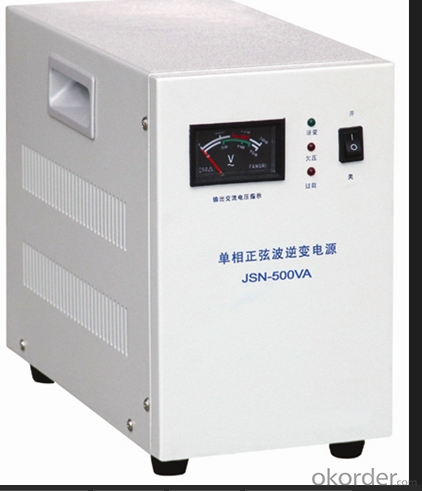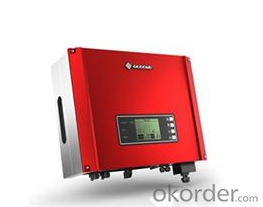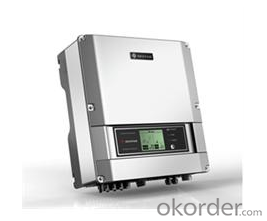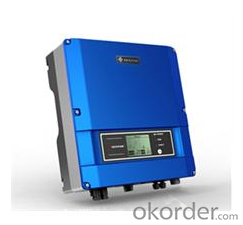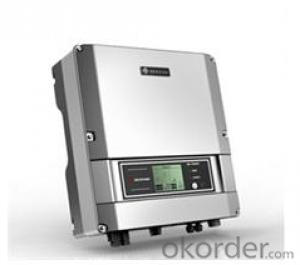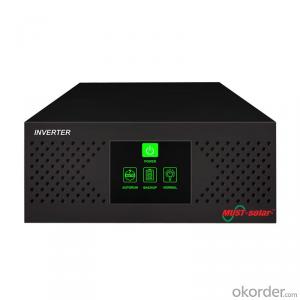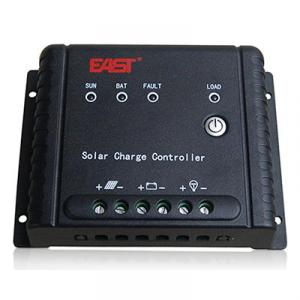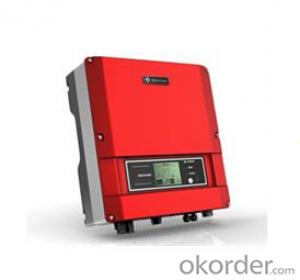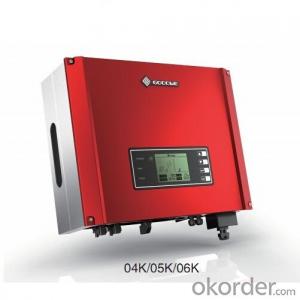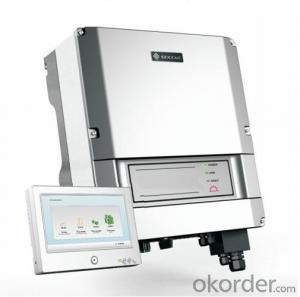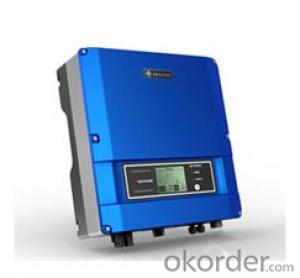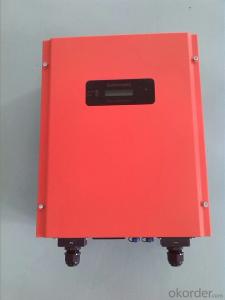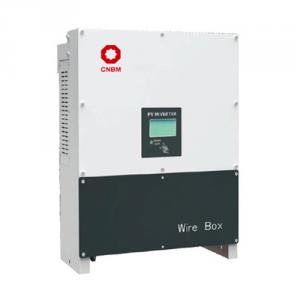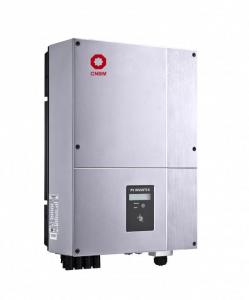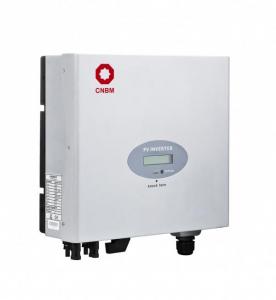Sungold Solar Inverter GS4000-DT
- Loading Port:
- Shanghai
- Payment Terms:
- TT or LC
- Min Order Qty:
- 10 unit
- Supply Capability:
- 100 unit/month
OKorder Service Pledge
OKorder Financial Service
You Might Also Like
Description:
GoodWe Smart DT series inverters are typically designed for home solar systems, 4kW/5kW/6kW.By adopting cutting-edge technology of photovoltaic field, it provides three making home system connection well balanced ,safer and more convenient. The integrated allow two-array inputs from different roof orientations. And the combination of both RS485 communication makes the system well interactive and extremely easy to be monitored.
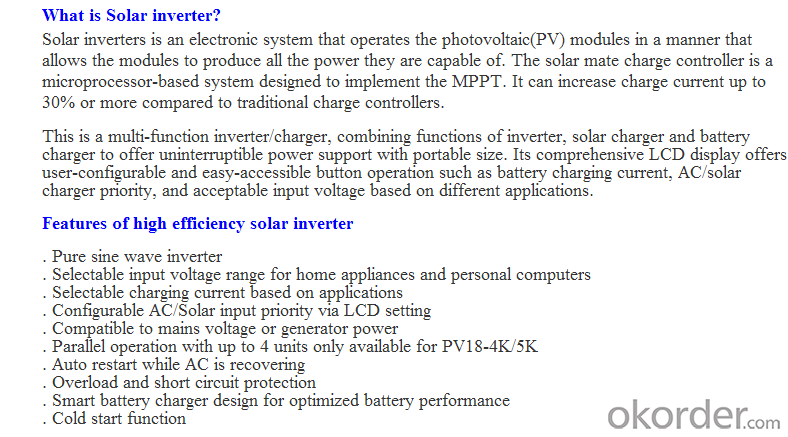
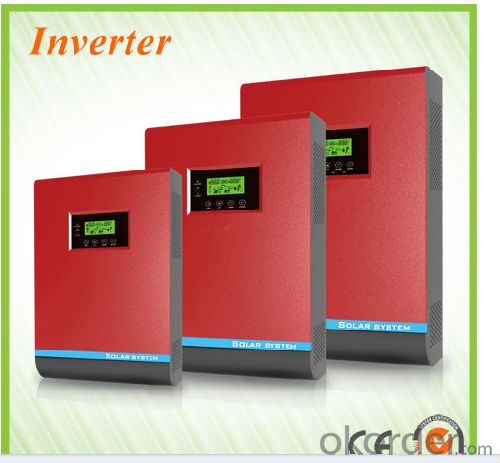
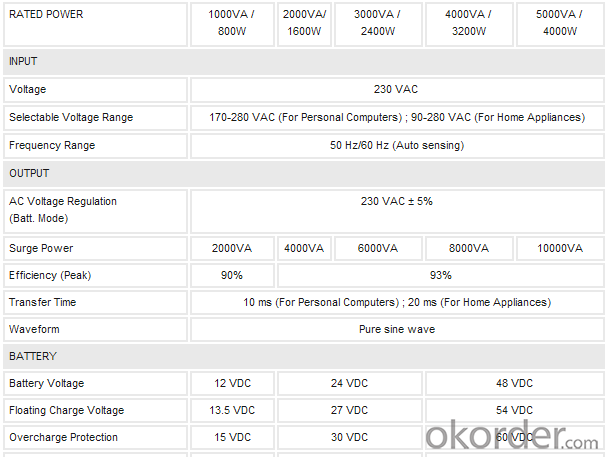
FAQ:Pls introduce more about CNBM
CNBM is a China government leading company .One of Global Fortune 500 .So ,CNBM can get more support from government .
- Q: How do you connect a solar inverter to a data monitoring system?
- To connect a solar inverter to a data monitoring system, you need to follow a few steps. First, ensure that your solar inverter is compatible with a data monitoring system. Next, connect the inverter to a local network, either wired or wireless, depending on the available options. Then, configure the inverter's settings to enable data transmission. Finally, install the required software or app provided by the data monitoring system and use the provided instructions to link the inverter to the monitoring system.
- Q: Can a solar inverter be used in grid-tied systems?
- Yes, a solar inverter can be used in grid-tied systems. In fact, a solar inverter is an essential component of a grid-tied system as it converts the direct current (DC) produced by the solar panels into alternating current (AC) that can be fed into the electrical grid. This allows for the efficient utilization of solar energy and enables homeowners or businesses to offset their electricity consumption with solar power, potentially even earning credits for excess energy produced.
- Q: Can a solar inverter be used with a remote monitoring system?
- Yes, a solar inverter can be used with a remote monitoring system. In fact, many solar inverters are designed to be compatible with remote monitoring systems, allowing users to monitor their solar energy production, system performance, and troubleshoot any issues remotely. This enables better control and management of the solar power system, ensuring optimal efficiency and performance.
- Q: Can a solar inverter be used with different types of grounding configurations?
- Yes, a solar inverter can be used with different types of grounding configurations. Solar inverters are typically designed to be compatible with various grounding systems, including grounded, ungrounded, or floating configurations. However, it is important to consult the manufacturer's specifications and guidelines to ensure proper installation and operation in accordance with the specific grounding requirements.
- Q: Can a solar inverter convert DC power to AC power during a power outage?
- No, a solar inverter cannot convert DC power to AC power during a power outage. During a power outage, the solar inverter relies on the grid to function, and without grid power, it cannot convert DC power from the solar panels into usable AC power.
- Q: How does a solar inverter protect against short circuits?
- A solar inverter protects against short circuits by monitoring the electrical current flow and detecting any abnormal increase in current caused by a short circuit. Once a short circuit is detected, the inverter immediately shuts down the power output to prevent any damage to the solar panels, the inverter itself, or the electrical system.
- Q: How is the output voltage and frequency of a solar inverter regulated?
- The output voltage and frequency of a solar inverter are regulated through a combination of control systems and power electronics. The control system continuously monitors the input from the solar panels and adjusts the inverter's operation accordingly. It analyzes the DC voltage generated by the panels and converts it to AC voltage at the desired frequency. This is achieved by controlling the switching of power electronic devices such as transistors or thyristors. These devices convert the DC power into high-frequency AC power, which is then transformed to the desired output voltage and frequency through a transformer or filter circuit. Overall, the regulation of the output voltage and frequency is achieved by the precise control of these power electronic components within the solar inverter.
- Q: What is the role of a solar inverter in a grid-tied system?
- The role of a solar inverter in a grid-tied system is to convert the direct current (DC) electricity generated by the solar panels into alternating current (AC) electricity that can be used to power electrical appliances and be fed back into the utility grid. It also ensures the synchronization of the solar system with the grid and regulates the voltage and frequency of the electricity being produced.
- Q: Can a solar inverter be used with a solar-powered cooling system?
- Yes, a solar inverter can be used with a solar-powered cooling system. The solar inverter is responsible for converting the direct current (DC) power generated by the solar panels into alternating current (AC) power, which is required to operate the cooling system. By connecting the solar panels to the inverter, the generated solar energy can be efficiently utilized to power the cooling system, making it a sustainable and eco-friendly solution.
- Q: Can a solar inverter be used with micro-inverters?
- Yes, a solar inverter can be used with micro-inverters. Micro-inverters are typically used in small-scale solar installations to optimize the performance of individual solar panels. They convert the DC power generated by each solar panel into AC power, which can then be combined and synchronized by a central solar inverter. This allows for greater flexibility, efficiency, and monitoring capabilities in the overall solar system.
Send your message to us
Sungold Solar Inverter GS4000-DT
- Loading Port:
- Shanghai
- Payment Terms:
- TT or LC
- Min Order Qty:
- 10 unit
- Supply Capability:
- 100 unit/month
OKorder Service Pledge
OKorder Financial Service
Similar products
Hot products
Hot Searches
Related keywords
